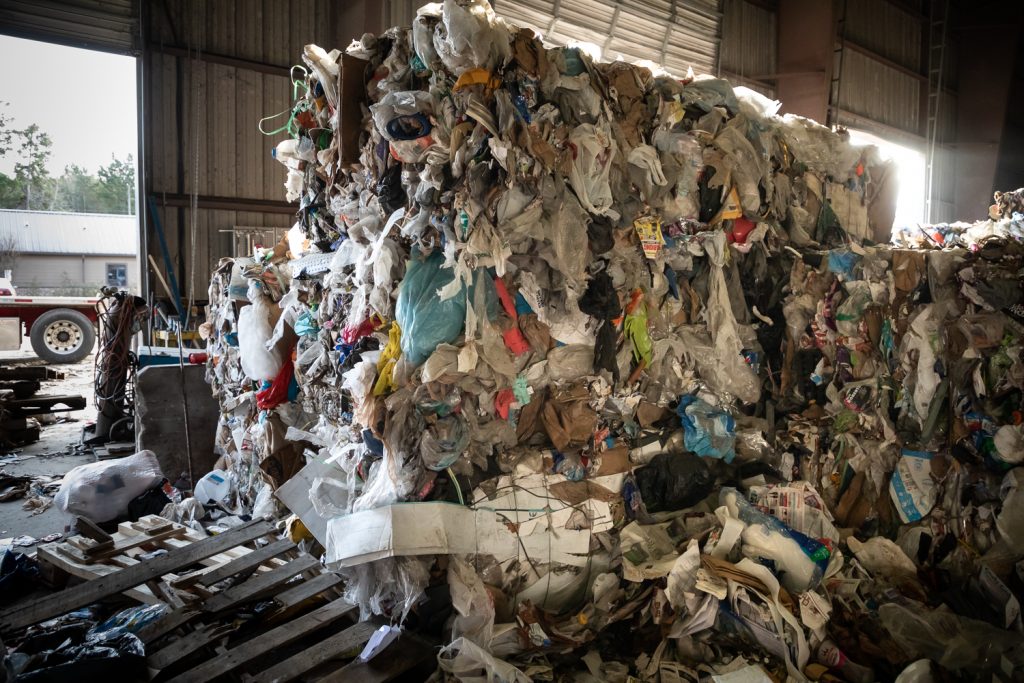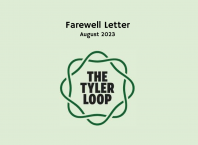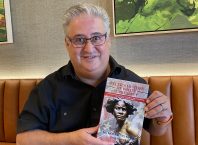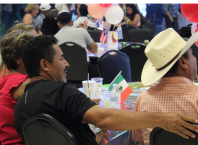Only a few days old, a tiny albatross chick fought for her life. Born on the Midway Atoll — a chain of islands located at the northern tip of the Hawaiian archipelago — her nest is on the oldest atoll in the world.
Once hosting a naval base during World War II, Midway Island is also the home for the world’s largest albatross colony. An article by Tessa Broholm on the Ocean Blue Environmental blog describes the situation. Every year, nearly three million birds nest on the three small islands.

More than 2,000 miles from the nearest continent, Broholm said Midway Atoll has one of the most severe cases of plastic garbage. More than 100 pounds of plastic wash up on the beaches every week.
Monitoring these birds for many years, Ocean Blue observers documented how adult albatrosses mistake brightly colored plastic pieces for prey and feed them to their chicks. The chicks are unable to regurgitate the plastic pieces, and about one-third of the chicks die every year. Even if the baby albatross — born just a few days ago — survives to adulthood, it will likely suffer with smaller wings or shorter legs making it harder to escape predators.
A mounting problem
Mother Earth News, a bi-monthly magazine founded in 1970 considered the guru of sustainable living by millions of readers.
“Trash is a big dirty problem,” said Amy Korst in a Mother Earth News article.
“The average American tosses out nearly 2,000 pounds of garbage every year. A large chunk is plastic items. In the recycling world, starting a discussion about plastics is like waltzing through a minefield. The issues surrounding this material are laden with emotion, misunderstanding, and sensationalism,” Korst said.
Americans make up only 4% of the world’s population, but generate 25% of the world’s garbage. On average, each American contributes 4.4 pounds of waste a day — an equivalent of 16 billion diapers, two billion razor blades and 220 million tires a year, according to the magazine’s writers.
Recycling an item means taking an item, melting it down and turning the material back into itself, maybe more than once. This process is called a closed-loop and can be done with paper, glass and some types of metal.
Every bit still with us

However, plastic is much more complicated. Korst, author of “Zero-Waste Lifestyle,” spent a year creating less trash and achieving zero waste in her home. In her book, she explains plastic has a much shorter life in the recycling process, and most of the plastic items will never be cloned.
Possibly the most serious issue with this human-made product is that plastic is never, ever biodegradable unlike paper or metals. Plastic items photodegrade: A process when wind, sun or water breaks the material down into tiny little pieces but never lose their chemical composition as a toxic product.
Every piece of plastic ever created still exists, sitting and waiting somewhere on Earth. Poor countries such as Malaysia earn income by accepting plastic garbage, basically becoming a secondary waste disposal site for the world. The piles of plastic in remote villages reach above their small homes, eventually overwhelming them until annual storms sweep the debris out to sea.
Chinese buyers purchased plastic from the U.S. for decades, discarding the unusable items. In 2018, the Chinese realized they produced enough plastic in their own country and did not need to buy it. American waste facilities’ plastics piled up with nowhere to go.
A report released by Greenpeace USA claimed major companies such as Coca-Cola, PepsiCo and Nestle work beside fossil fuel companies to create more plastic. That decision contradicts the companies’ claims to be climate-friendly, reducing their carbon footprint.
A hard sell
Unfortunately, the cost of production of plastic exceeds the need for secondary items, making it difficult and less economical for a city to sell the plastic. It’s unlikely companies want to spend the time and money necessary to turn the melted plastic material into a new product.
That’s why most plastic items placed into a recycle bin are not recycled.
The Tyler Recycling Center at 418 N. Bois D’Arc St. accepts plastic items, but their website informs only plastic with the recycling symbols of #1 and #2 are recycled. The center is open to all residents, regardless of whether they live within Tyler city limits.
Leroy Sparrow, general manager of the City of Tyler Solid Waste department, said in 2020, the center received over 46 tons of #1 plastic and 21 tons of #2 plastic.

Items placed in curbside bins are not taken to the Tyler Recycling Center, but are shipped to Rivers Recycling in Kilgore, Texas, to be sorted, washed and sold to secondary markets. Read more about the process in The Tyler Loop’s recycling megaguide.
Unrecyclable plastic is stacked, wrapped and stored until a company purchases it.
Why is unrecycled plastic garbage bad?
Plastic parts exposed to the elements break down into microscopic pieces but large enough to clog up a water treatment plant. Tin cans coated in plastic to extend the life of the contents and foods packaged in plastic break down and are swallowed by humans, carried through the body and end up in toilets. With every flush, the plastic bits flow through sewer pipes into treatment plants, clogging equipment and costing millions to repair.
Plastic dumped in rivers, and littered along roads and forests may fly around in the wind and eventually find their way into animal habitats.
Animals can become entangled in discarded plastics causing death by suffocation. The plastic bag used for a few seconds between the store and car exists for an additional 1,000 years no matter where it is placed after it is emptied.
Yes, that is years. A plastic “disposable” fork may take 400 years before crumbling, much longer than grandmother’s best silver.
Unrecycled plastics are especially harmful in oceans and beaches. Information provided by The Ocean Blue Project blog estimates there are 15-51 trillion pieces of plastic in the ocean, exponentially exceeding the actual food eaten by sea animals.
An estimated one million birds die as a result of plastic every year. In the 1960s, less than 5% of birds were found with plastic in their stomachs. Twenty years later, over 80% of birds had plastic in their stomachs.
Why are some plastics good?
While single-use plastics such as food containers can be harmful, heavy duty durable plastic is considered a good choice for long-term uses, such as playground equipment, benches, furniture and medical supplies. Plastic is lightweight, sometimes preferred for grocery carts and shipping or storage containers.
The best solution

Korst, who offers hundreds of simple ideas in “Zero Waste Lifestyle,” says the best solution is to reduce plastic instead of recycling. Consumers must decide for themselves how best to eliminate plastics in their homes and communities. What if every person eliminated using a single-use plastic item every day? Even the little things help.

For me, seeing a dissected bird’s stomach full of plastic was the end of my plastic use.
I have adopted these practices:
– Refusing a straw at food places
-Washing a plastic fork and using it again
-Using a plate to cover a bowl (instead of plastic wrap) like my grandmother did -Swapping paper bags for lining trash cans
-Buying food in bulk
-Carrying items in a large woven basket at the farmer’s market
-Using biodegradable bags – easy to find in most stores or online
-Reusing glass mayo and pickle jars for storing food
-Drinking from glass containers
Plastic has indeed changed our lives and became a revolutionary product that can be found in almost every item touched. But too much of a good thing can become a harmful nuisance. Still worse, for an albatross chick, it can be deadly.
Ann Bush is a travel writer and avid bird watcher living in Hawkins, Texas. She journeys to our nation’s most beautiful places preaching the hazards of plastic to feathered friends. Almost 30 years ago, Ann began her personal green movement by eating organic; replacing toxic cleaning products, makeup and toiletries; and building a plastic-free camper.
Love what you're seeing in our posts? Help power our local, nonprofit journalism platform — from in-depth reads, to freelance training, to COVID Stories videos, to intimate portraits of East Texans through storytelling.
Our readers have told us they want to better understand this place we all call home, from Tyler's north-south divide to our city's changing demographics. What systemic issues need attention? What are are greatest concerns and hopes? What matters most to Tylerites and East Texans?
Help us create more informed, more connected, more engaged Tyler. Help us continue providing no paywall, free access posts. Become a member today. Your $15/month contribution drives our work.







